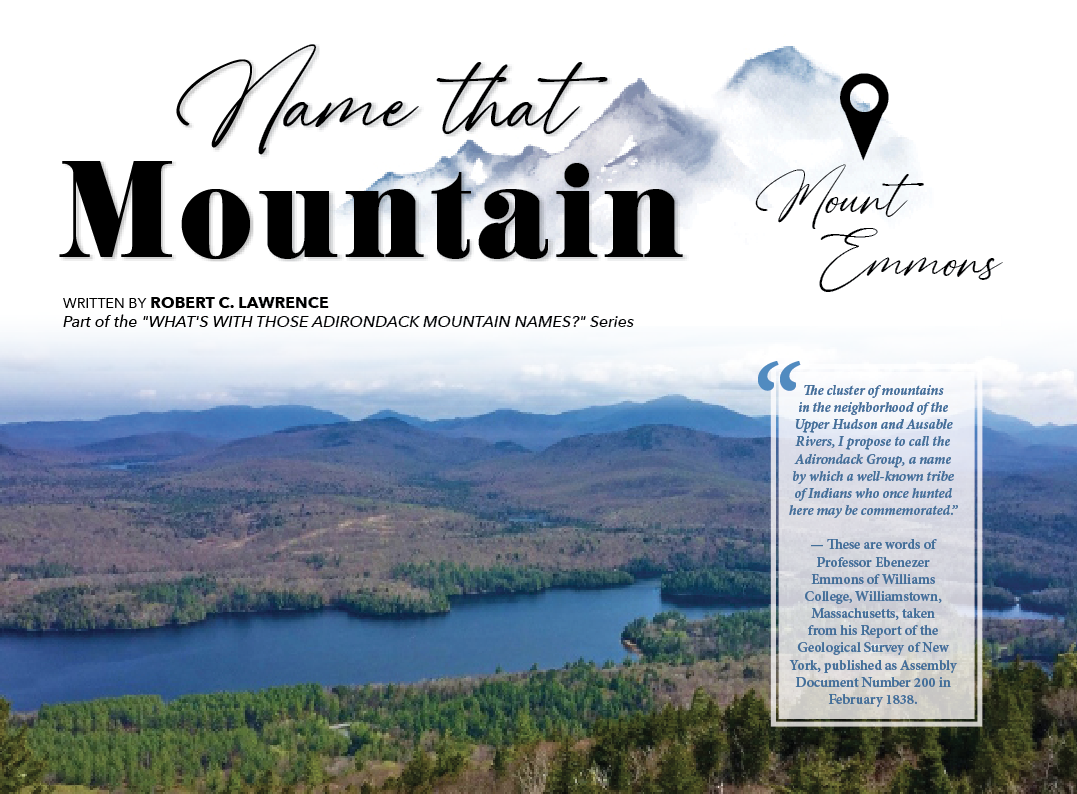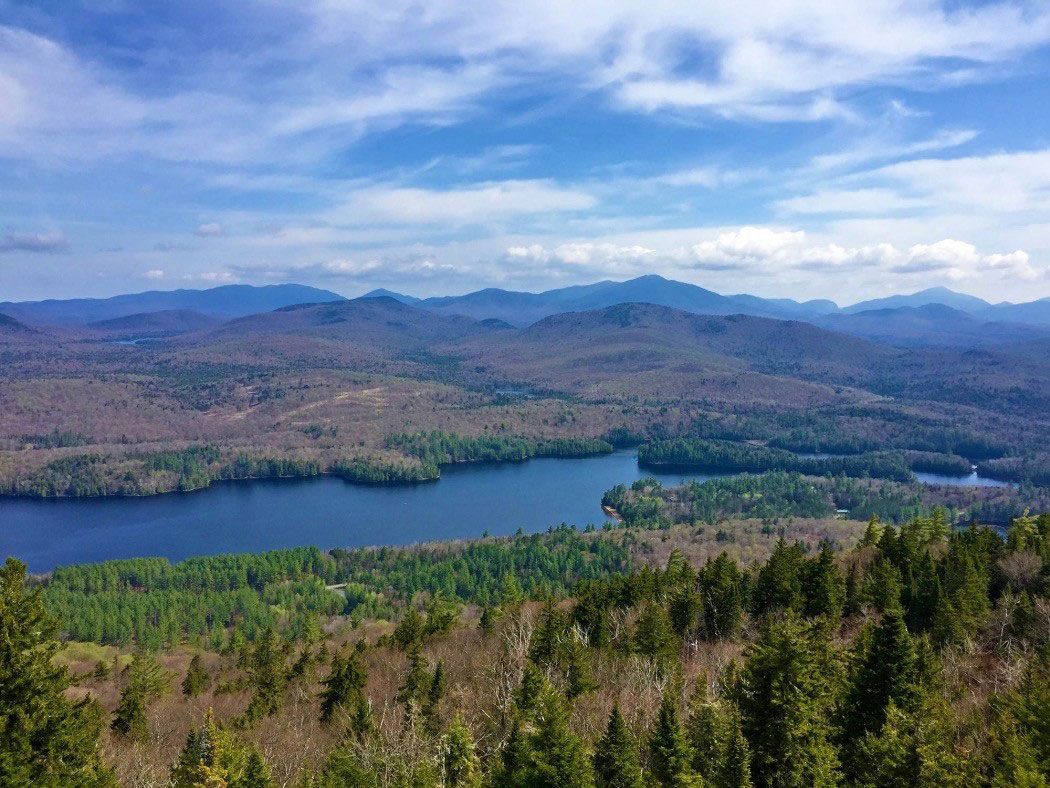
Written By Wendy Hobday | Photos provided by Charles Annibale
While kayaking on beautiful Lake Durant near Blue Mountain Lake, New York, one June day, my wife Carol Ann asked, "Where does Blue Mountain get its name?" The next day, we visited the nearby Adirondack Museum at Blue Mountain Lake to buy a place names book. But there was no such publication. So, I wrote What's With Those Adirondack Mountain Names?
Born in the Western Massachusetts village of Middlefield, Ebenezer Emmons (May 16, 1799-October 1, 1863) was the son of Ebenezer and Mary Mack Emmons, farmers. He was the only boy of the five siblings. Growing up in a rural area, Ebenezer became interested in the natural world surrounding him. He received his secondary education and preparation for college in nearby Plainfield.
In 1814, he commenced his studies in medicine at Williams College in Williamstown, Massachusetts. While at Williams, Ebenezer was introduced to geology Professor Amos Eaton and received a medical degree with a minor in geology after four years at the college.
After graduation, Ebenezer married Maria Cone of Williamstown and settled in Chester, Massachusetts, where he established his medical practice. While living there, he developed an interest in stone walls and decided to continue his studies in his minor, geology. So, his medical career was short-lived, and he turned to teaching chemistry, mineralogy, and geology at Williams College.
Longing for even more knowledge in geology, Emmons attended the Rensselaer School, founded by his former Williams College professor of geology, Amos Eaton, and higher education advocate Stephen Van Rensselaer. It was one of the first schools in the nation dedicated to science and civil engineering. Today, the school in Troy, New York, is known as Rensselaer Polytechnic Institute (R.P.I.). Emmons graduated from the school's first class of 1826 with a degree in geology. After graduation, he taught chemistry at Williams College and mineralogy and geology at the Rensselaer School.
In 1836, New York State Governor William Learned Marcy appointed Ebenezer Emmons to be a State Geologist for the Northern New York State Geological District to conduct the geological survey of Northern New York State (Counties of Essex, Clinton, Hamilton, Warren, Saint Lawrence, Franklin, and Jefferson), including the Adirondacks.
Emmons and other scientists organized and led Mount Marcy's first ascent the following year, naming that feature after New York Governor Marcy. One year later, Emmons called the mountain ranges in New York State the "Adirondack" and the "Taconic" Mountains and acquainted the public with these areas.
Emmons was appointed state geologist for North Carolina in 1851 and died in Brunswick, North Carolina, in 1863. He was laid to rest in Albany, New York’s Albany Rural Cemetery.
The American Museum of Natural History in New York honored him as one of the "Scientists Who Have Served the State of New York and the Nation." On the campus at his alma mater, today's R.P.I., a historical sign commemorates his connection to the school and highlights the achievements of his career in geology. Emmons was further honored by his induction into the Rensselaer Alumni Hall of Fame in 2007.
Mount Emmons, originally South Seward Mountain and one of New York's forty-six highest peaks, is in Harrietstown, Franklin County. It is a fitting tribute to one of the most prominent geologists in New York and America in the nineteenth century.

WHAT'S WITH THOSE ADIRONDACK MOUNTAIN NAMES?
(The Troy Book Makers) is available at the following retail locations: Market Block Books (Troy), The Book House of Stuyvesant Plaza (Albany), Open Door Bookstore (Schenectady), Northshire Bookstore, Saratoga Outdoors (Saratoga), Adirondack Country Store (Northville), St. Andrews Ace Hardware (Queensbury) in many retail establishments in the Adirondack Park and on Amazon.com.
